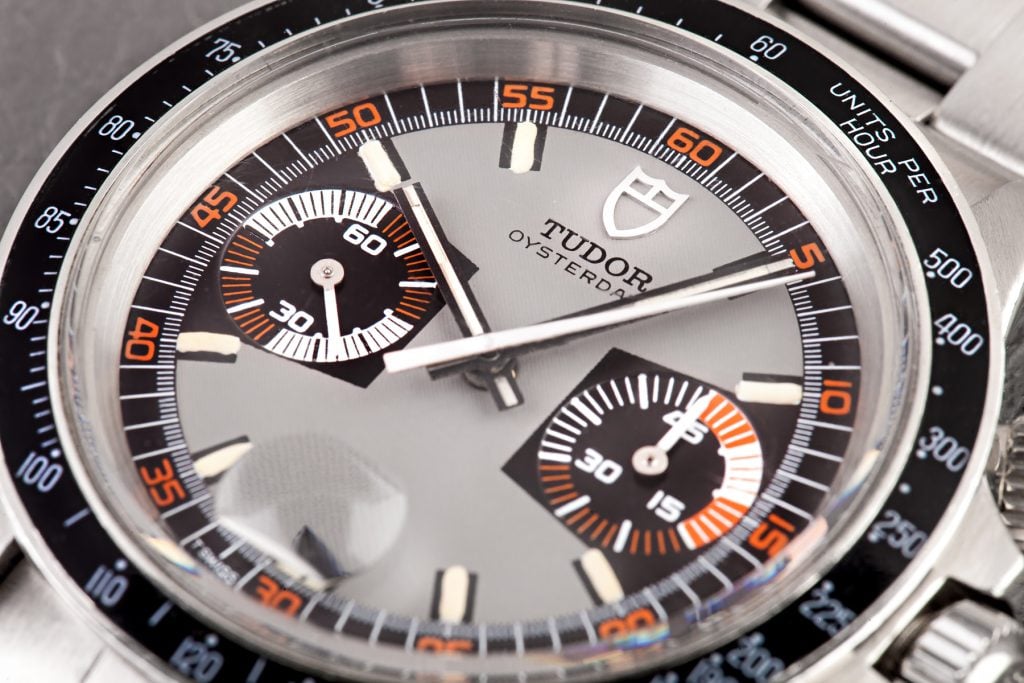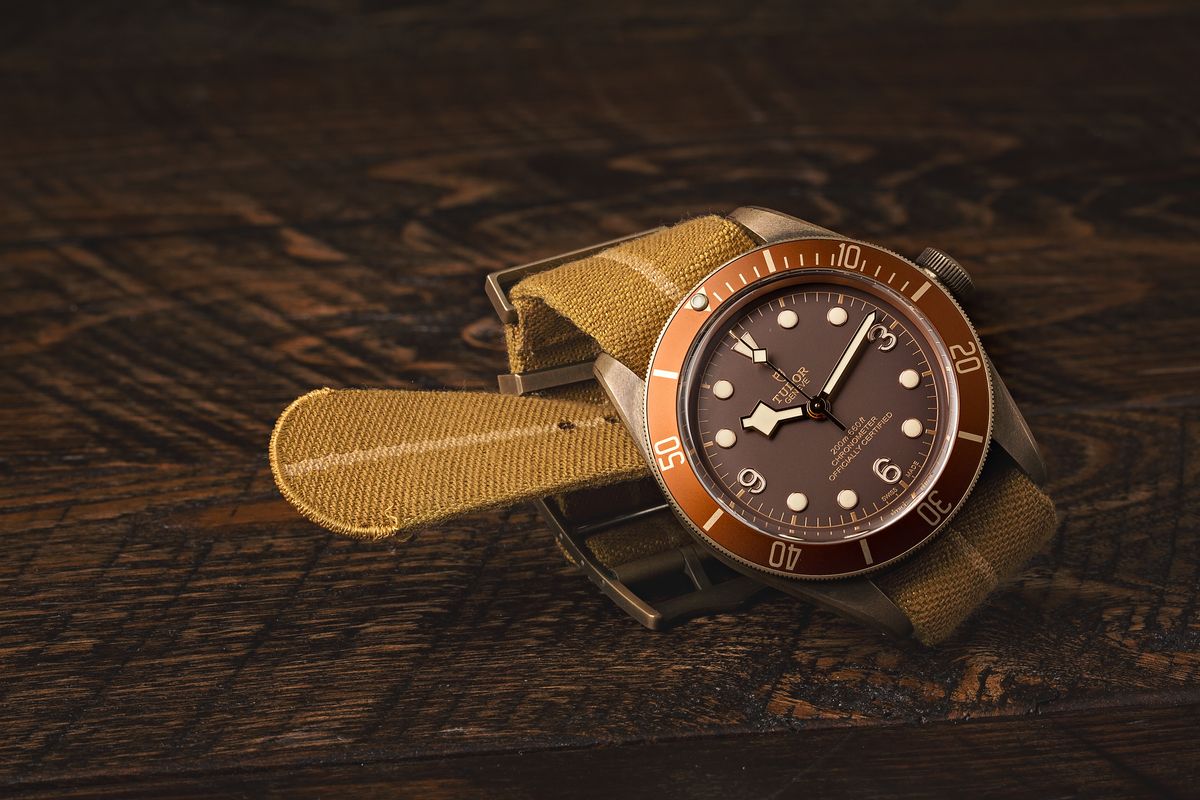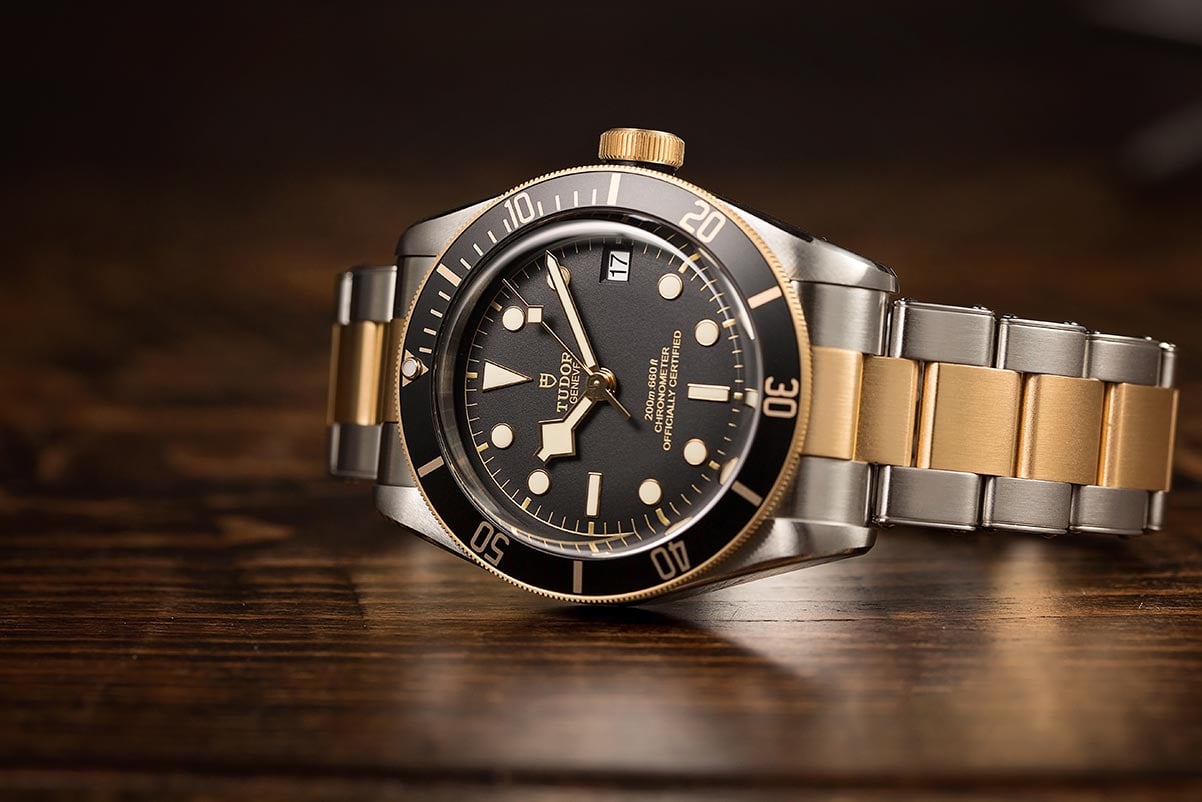Originally created by Rolex founder Hans Wilsdorf in 1926 to be a more affordable alternative to his flagship timepiece company, Tudor has become extremely popular among watch collectors in more recent years due to its iconic designs and unique brand history. Tudor was originally able to achieve its more affordable price point by using third-party movements paired with external case components produced by its parent company Rolex. This approach enabled Tudor to sell its watches at significantly lower retail prices, while still allowing the brand’s models to offer the same legendary durability that had helped make Rolex famous.
One of the most famous lines of vintage Tudor watches is the sports chronograph range from the 1970s. Chronograph literally means “time writer” and these Tudor watches are obviously intended as quality time keepers with sports-forward styling, rather than simply being elegant accessories or durable and utilitarian dive watches. Celebrated as a funky cult-favorite from the brand’s archives, the Tudor Chronograph reference 7149 is emblematic of a golden era from the company’s history, and its iconic design even served as the foundation for one of Tudor’s modern heritage-inspired chronograph watches.
Vintage Tudor 7149 Chronograph
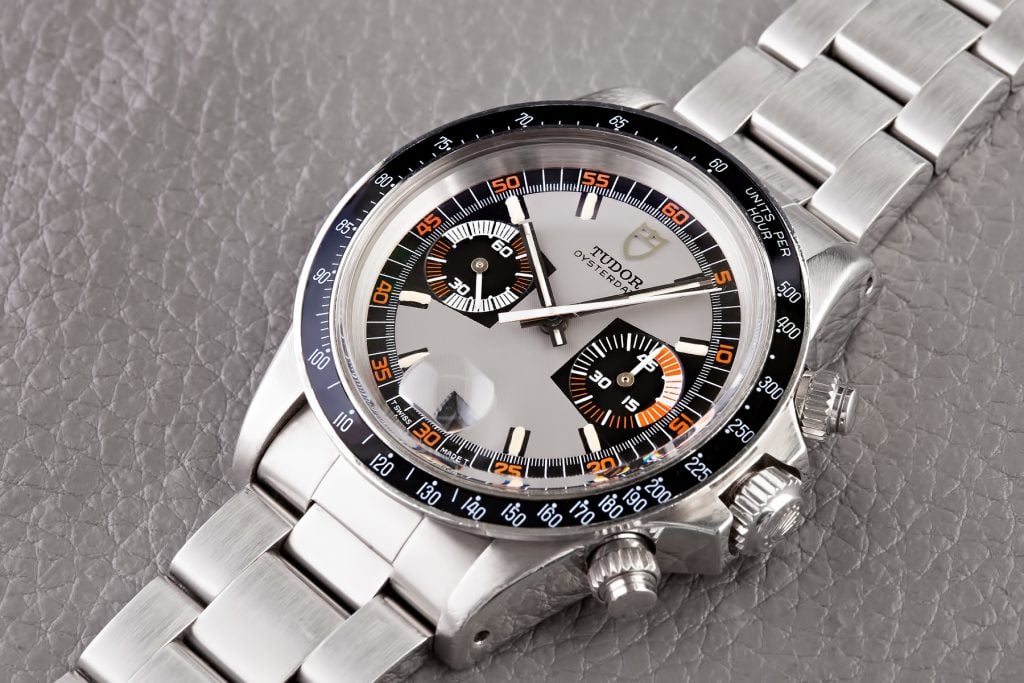
Tudor Chronograph 7149 Key Features:
- Production Years: 1971 to 1977 (Approx.)
- Reference Number: 7149
- Nickname: “Monte Carlo”
- Case Size: 39mm
- Materials: Stainless Steel
- Functionality: Time w/ Running Seconds, Date Display, 45-Minute Chronograph
- Dial: Gray and Black w/ White and Orange Accents; Gray and Blue w/ White and Orange Accents
- Bezel: Fixed, Black or Blue Acrylic w/ Tachymeter Scale
- Hands: Baton Style, Luminous Hour and Minute Hand
- Luminescent Material: Tritium
- Chronograph Pushers: Screw-Down
- Crystal: Acrylic (Box Shaped w/ Cyclops Magnification Lens at 6 o’clock)
- Movement: Valjoux Caliber 234 (Manual Wind)
- Strap/Bracelet: Stainless Steel Bracelet (Oyster Style)
Click here to learn more about the history of Tudor watches.
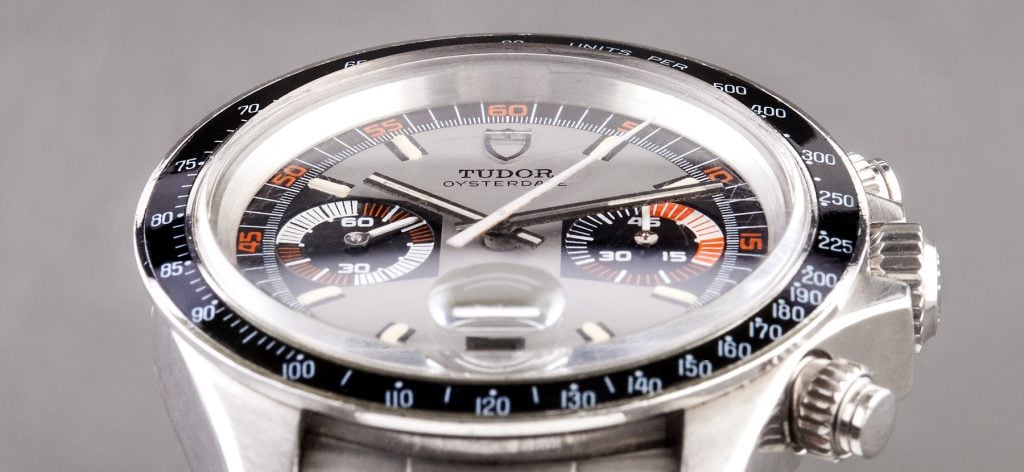
History of the Tudor Chronograph Reference 7149
The first Tudor Chronograph watches were introduced in 1970 with a trio of models that featured 39mm cases and two-register chronograph layouts that were powered by manual-wind Valjoux-based movements. Although one of those three initial models never was formally released to the public, the second generation of Tudor Chronograph watches appeared the following year in 1971, and this series remained part of the brand’s catalog until approximately 1977. It was during this second generation of Tudor sports chronographs that the reference 7149 would make its appearance.
While the new generation of Tudor chronographs retained the case size and overall dial design of their predecessors, their internal movements were different, and replacing the Valjoux Caliber 7734 was the manually-wound Valjoux Caliber 234 movement, which offered users superior accuracy with an increased rate of 21,600bph and a more advanced column wheel controlled chronograph mechanism. This second series of Tudor Chronograph models remained part of the brand’s catalog until approximately 1977, when it was replaced by the subsequent generation of Tudor “Big Block” chronographs that had made their inaugural appearance the previous year, and were powered by self-winding movements and featured thicker cases.
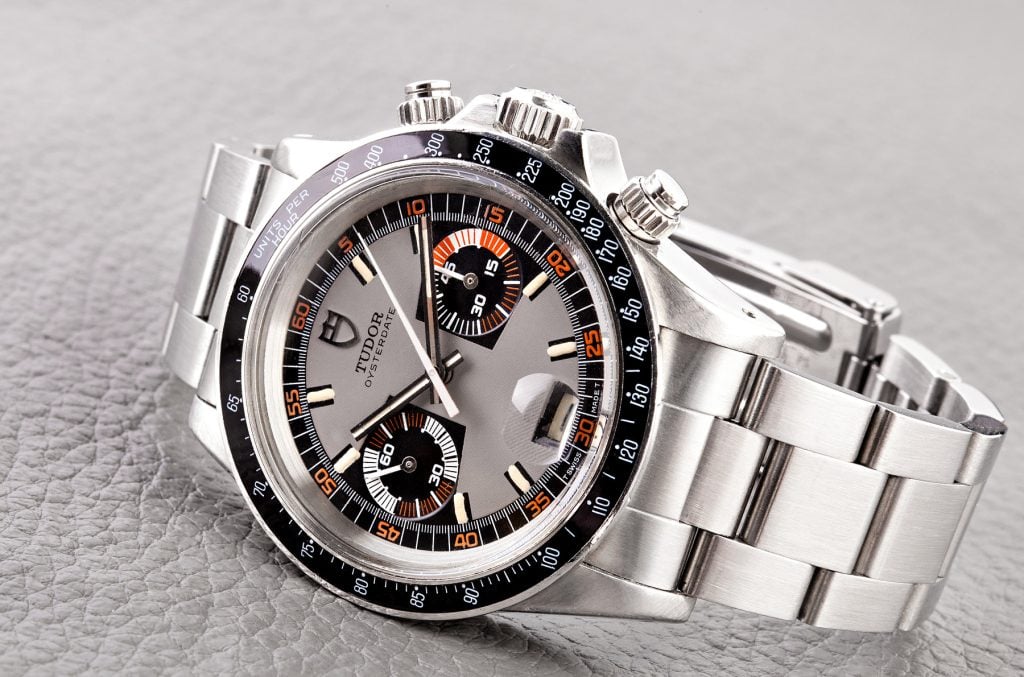
Tudor 7149 Chronograph Features and Details
The vintage Tudor Chronograph reference 7149 offers an overall aesthetic that is rather familiar to Tudor’s reference 7031 chronograph, which is its direct predecessor from 1970. Both models offer an iconic 70’s dial design with a two-register chronograph layout, a fixed tachymeter scale bezel, and a date window located at the 6 o’clock position, complete with an accompanying cyclops magnification lens on the crystal. With that in mind, the single greatest improvement featured on the Tudor 7149 chronograph compared to its immediate predecessor is the internal movement used to power the watch.
In addition to a higher and more accurate frequency of 21,600bph (compared to the 18,000bph frequency of the previous Caliber 7734), the manual-wind Valjoux Cal. 234 movement fitted to the Tudor 7149 chronograph also benefited from a more sophisticated column wheel controlled mechanism, compared to the cam-actuated approach used by the previous generation of Tudor Chronograph movements. In many ways, the reference 7149 chronograph can be seen as Tudor’s version of a Rolex Daytona 6263, despite the fact that the two models do not feature many visual similarities. Both vintage sports chronographs feature acrylic tachymeter bezels, while the siblings of these two watches (the Tudor Chronograph ref. 7159 and the Rolex Daytona ref. 6265) both featured stainless steel tachymeter scale bezels.
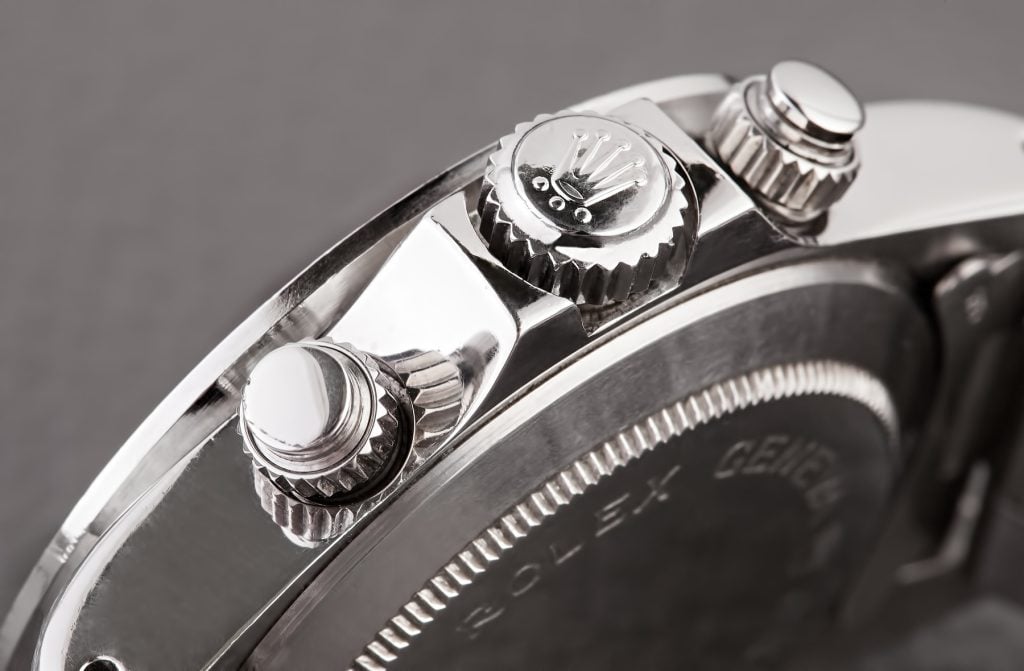
A Modern Take on the Vintage Tudor Chronograph
For decades, the vintage Tudor Chronograph ref. 7149 remained a discontinued fan-favorite from the brand’s archives. However, following Tudor’s global relaunch in 2009 and its subsequent return to the United States in 2013, this sporty vintage chronograph with decidedly 1970s design details has been receiving some serious mainstream attention. Additionally, a major contributing factor to this has been Tudor’s modern Heritage Chrono collection, which was released in 2010 to celebrate the 40th anniversary of the company’s very first chronograph watch.
Similar to the original vintage Tudor Chronograph 7149, the modern Tudor Heritage Chrono is available in either black or blue configurations, although the two models do feature a few other small design differences other than just the color of their dials and bezels. However, the modern Tudor Heritage Chrono is a thoroughly contemporary timepiece, despite its vintage-inspired styling, and it features a sapphire crystal and an automatic movement, rather than the acrylic crystal and manual-wind caliber that were fitted to the original Tudor 7149 Chronograph from the 1970s. Additionally, unlike the vintage reference 7149, which features Rolex’s signature cyclops magnification lens on its crystal at the somewhat unusual 6 o’clock position, the modern Tudor Heritage Chrono offers a more contemporary flat sapphire crystal, with a completely unmagnified date window. Furthermore, both of the chronograph registers and the hour markers feature a slightly different design on the contemporary model compared to those featured on the vintage original, and while the vintage Tudor 7149 chronograph is fitted with a fixed tachymeter bezel made from either black or blue acrylic, the bezel fitted to the modern Tudor Heritage Chrono rotates bidirectionally and includes an aluminum insert marked with a 12-hour scale.
With all of that in mind, although modern Tudor Heritage Chrono watches still remain relatively affordable and models fitted with either dial color can be routinely found for well below the $5k price point on the pre-owned market, prices for vintage Tudor reference 7149 Chronograph watches are significantly more expensive, with available examples currently trading hands for anywhere between $15k and $50k depending on their color, provenance, and overall condition, along with whether or not the watch is still accompanied by its original box and papers. While Tudor is Rolex’s little sibling and many of the brand’s models are intended to be more affordable alternatives to those produced by its big brother, the Tudor Chronograph 7149 offers a funky and retro themed design that doesn’t have an exact equivalent anywhere in Rolex’s catalog – past or present – and that is precisely why it is a favorite among today’s vintage Tudor collectors.
